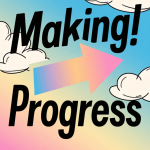Procrastination is one of the biggest productivity killers we face daily. It’s easy to delay tasks, convincing ourselves that we’ll start “later” or “tomorrow.” The 2-Minute Rule offers a simple yet highly effective method to beat procrastination right at its roots. By focusing on the first two minutes of a task, this rule helps you bypass inertia and gain momentum. In this article, we’ll dive deep into how you can apply the 2-Minute Rule to overcome procrastination, increase efficiency, and achieve your goals with less stress.
What Is Procrastination Really?
Procrastination isn’t just laziness. It’s often a complex response to fear, perfectionism, or overwhelm. Understanding why we procrastinate is the first step toward changing that behavior.
How the 2-Minute Rule Addresses Procrastination
The 2-Minute Rule breaks down any daunting task into a tiny, manageable action. Instead of focusing on completing the whole project, you commit only to starting it for two minutes. This approach lowers psychological resistance and makes starting much easier.
Why Two Minutes?
Two minutes is short enough to feel effortless but long enough to create meaningful progress. It’s a manageable chunk of time that your brain doesn’t resist, which helps you bypass the “starting barrier” and create momentum.
Step-by-Step Guide to Using the 2-Minute Rule
- Identify a Task You’re Avoiding
Pick one task you’ve been putting off, no matter how big or small. - Set a Timer for Two Minutes
Use your phone or a timer to keep it brief and focused. - Start Immediately
Begin working on the task without overthinking. Focus solely on doing something—anything—for those two minutes. - Evaluate Your Momentum
Once the timer goes off, decide if you want to keep going or stop. Most of the time, starting leads to continuing naturally.
Examples of the 2-Minute Rule in Action
- Opening your email inbox and reading the first message
- Writing the first sentence of a report
- Picking up clutter for two minutes to clear your workspace
- Doing a quick stretch before working out
- Planning your day by jotting down tasks
Psychological Benefits of Starting Small
Starting is often the hardest part because of fear of failure or perfectionism. The 2-Minute Rule minimizes this fear by making the initial step easy, increasing your confidence and reducing anxiety.
Overcoming Common Procrastination Triggers
- Perfectionism: Focus on “progress, not perfection.” Two minutes doesn’t require perfect results.
- Overwhelm: Break large tasks into two-minute chunks to avoid feeling swamped.
- Lack of motivation: Use the rule as a gateway to action instead of waiting for motivation to strike.
How to Build Lasting Habits with the 2-Minute Rule
Consistency is vital. Try attaching your two-minute start to daily cues, like morning coffee or after lunch. Over time, these small starts can build into larger, more sustained work sessions.
Using Technology to Your Advantage
Apps like Focus Booster, Pomodoro timers, or habit trackers can reinforce the 2-Minute Rule by helping you set short bursts of focused time and tracking your progress.
Success Stories
Many successful people credit small starting rituals for their productivity gains. For example, bestselling authors, entrepreneurs, and athletes often start their day with a simple two-minute task that sets the tone for focus and achievement.

Common Misconceptions
- The 2-Minute Rule isn’t about only working for two minutes, but about making starting easy.
- It’s not a replacement for full work sessions but a tool to break procrastination cycles.
The 2-Minute Rule is a game-changer in overcoming procrastination. By focusing on easy, manageable starts, you can reduce anxiety, increase motivation, and create lasting productive habits. Try it today—start your next daunting task with just two minutes—and watch how quickly your productivity transforms.


